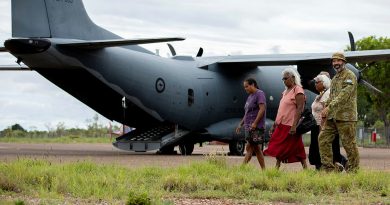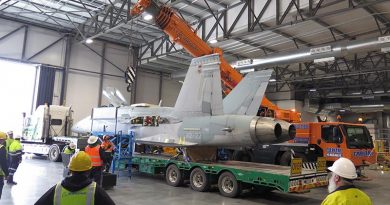The ‘Cost of Doing Business’ book launched

A new book tells the story of Australia’s tumultuous path to becoming a global leader in military aviation safety. The Cost of Doing Business: Military Aviation Safety in Australia 1914 – 2022 was written by Squadron Leader Barrie Bardoe of the Defence Aviation Safety Authority (DASA).
CAPTION: The Cost of Doing Business: Military Aviation Safety in Australia 1914 – 2022, written by Squadron Leader Barrie Bardoe.
As recent tragic events have shown, aviation is never risk-free, but Defence’s commitment to safety has seen a vast reduction in incidents this century.
Squadron Leader Bardoe said that when he began working on the book, a narrative of drama and strong personalities emerged, which isn’t what the subject matter might imply.
“The story of what has gone on behind the scenes to deliver on capability needed to be told and the more I immersed myself in it, the more compelling that became,” he said.
The first military aviation flight occurred on March 1, 1914, when Lieutenant Eric Harrison took to the air in a Bristol Boxkite at Point Cook. Although that flight ended uneventfully, flying was halted later in the day after a dog lunged at the rotating propeller. The fate of the dog is not recorded, but the propeller had to be replaced, suggesting the first casualty was a canine.
Australia then became involved in World War 1 and military aviators suffered casualty rates similar to infantry at more than 40 per cent.
With the establishment of the Royal Australian Air Force (RAAF) in 1921, Australia received an ‘Imperial gift’ of aircraft and equipment that formed the basis of the new force, but the inter-war years were most often defined by a poor safety record.
Aircraft such as the SE5a – the first fighter aircraft of RAAF – were already obsolete and every flyable airframe crashed.
Some crashed multiple times, such as one with the serial A2-13. That lived up to the superstition about the number ‘13’ by crashing every year except 1923 until it was finally scrapped in 1926.
“Sometimes the carnage took on a darkly surreal aspect such as when a pilot crashed and killed his future father-in-law, then recovered, regained his wings, and crashed again this time killing himself,” Squadron Leader Bardoe said.
“His fiancée’s grief can hardly be imagined.
“When the Duke of York visited in 1927 for the opening of Parliament House in Canberra, there were two separate and fatal crashes – one of which occurred only 600 metres from him.
“He must have wondered if the colonials could be trusted with aircraft.”
Ultimately, it was safety issues that ended the command of the ‘Father of the RAAF’ Sir Richard Williams.
From this difficult beginning, the RAAF briefly became the world’s fourth largest air force at the end of World War 2. With the onset of the jet age in the 1950s, attrition rates of 25 per cent and sometimes as much as 50 per cent became a fairly common global norm. It was often described as ‘the cost of doing business’, and was widely accepted by air forces across the world.
From the Australian perspective, a period of very high losses in the late 1980s and early 1990s triggered massive change, ultimately leading to alignment with a global safety convention in 2016 and the emergence of DASA.
Director General of DASA Air Commodore Joe Medved described The Cost of Doing Business as providing an entertaining and much needed record of Australia’s military aviation safety journey.
“The present generation of aviators may not be aware of past lessons nor the rationale for our current approaches, so it is important to contextualise contemporary aviation safety practices,” Air Commodore Medved said.
“The book is written in a style that will engage non-expert audiences just as much as those from an aviation background, providing a better understanding of the trials and tribulations required to achieve the strong safety performance that we have come to expect in the modern environment.”
The Cost of Doing Business is available for no cost download from the DASA website: https://dasa.defence.gov.au/sites/default/files/AW-Military-Aviation-Safety.pdf
.
.

.
.





